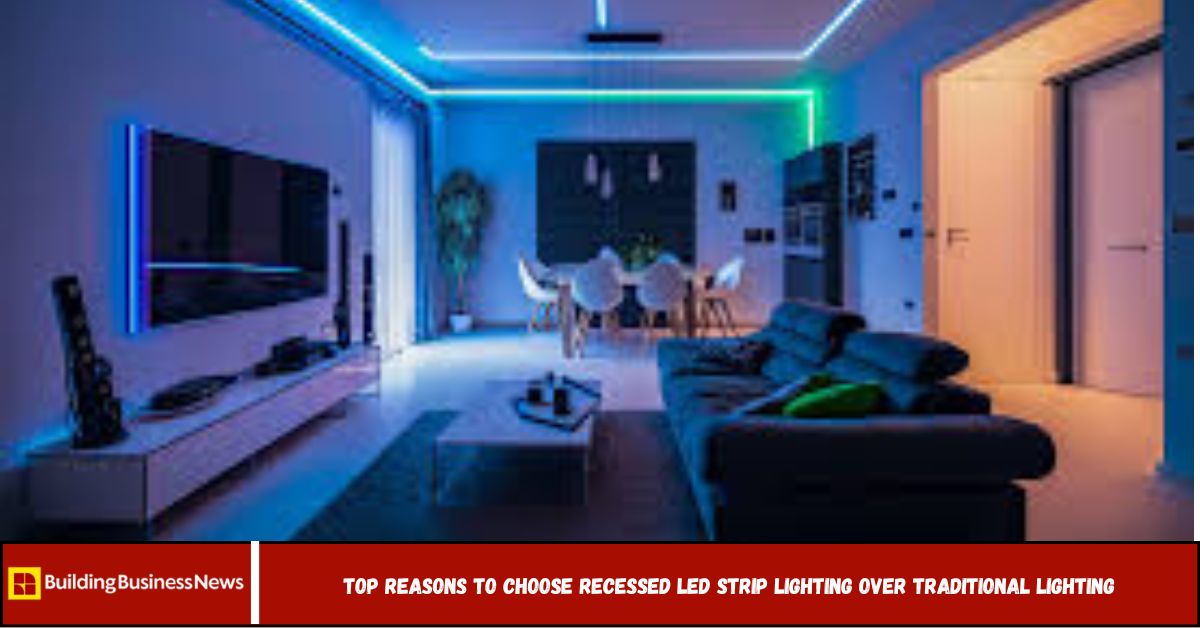Recessed LED strip lighting is rapidly becoming the preferred choice for homeowners, interior designers, and commercial property developers. Offering superior energy efficiency, sleek aesthetics, and design versatility, this modern lighting solution outshines traditional fixtures in both performance and style. This article breaks down the top reasons to make the switch, backed by industry trends and benefits.
Recessed LED strip lighting has become a go-to choice for designers seeking clean, modern interiors—but why is it outperforming traditional lighting options? Unlike bulky fixtures or exposed bulbs, recessed LED strips are hidden within ceilings, walls, or furniture, offering seamless illumination without visual clutter. This concealed design creates a soft, diffused glow that enhances ambiance while elevating the aesthetic of any space. Ideal for contemporary homes, retail environments, and upscale hospitality settings, recessed LED lighting blends function and luxury effortlessly. In this article, we’ll explore the key reasons why more people are making the switch—from energy efficiency to design flexibility and long-term value.
Why Are More People Switching to Recessed LED Strip Lighting?
“Lighting can transform a space—and recessed LED strips are leading that transformation.”
In the world of interior and architectural design, lighting is more than just function; it’s about ambiance, energy efficiency, and aesthetic impact. Traditional lighting methods like incandescent bulbs or bulky fixtures are quickly losing favor.
In their place, recessed LED strip lighting has emerged as a modern, sleek, and cost-effective solution. But what exactly makes recessed LEDs a better choice?
This guide explores:
- How recessed LED strip lighting compares to traditional lighting
- Key benefits like energy savings, flexibility, and visual appeal
- Ideal use cases for homes and businesses
- Environmental impact and long-term value
Let’s dive into why recessed LED lighting is the smarter lighting solution.
What Is Recessed LED Strip Lighting?
Recessed LED strip lighting involves flexible LED tape mounted inside channels or coves hidden within ceilings, walls, floors, or furniture. The result? A clean, continuous glow that adds depth and modern flair—without visible bulbs or bulky fixtures.
Key Advantages Over Traditional Lighting
1. Superior Energy Efficiency
- LEDs use up to 80% less energy than incandescent lighting.
- According to the U.S. Department of Energy, widespread LED adoption could save 348 TWh of electricity by 2027, equivalent to the annual output of 44 large power plants.
2. Modern, Minimalist Aesthetic
- Seamlessly blends into architecture.
- Creates soft, indirect lighting for a luxurious and high-end look.
- Perfect for contemporary homes, retail spaces, and offices.
3. Longer Lifespan = Lower Maintenance
- LEDs can last 25,000 to 50,000 hours.
- Reduced need for frequent replacements compared to traditional bulbs (which average ~1,200 hours).
4. Flexible and Customizable
- Can be cut to size, dimmed, or color-tuned.
- Ideal for accent lighting, under-cabinet lighting, cove lighting, or stair illumination.
- Works with smart home systems for automated control.
5. Eco-Friendly and Safe
- Contains no mercury or toxic materials.
- Generates less heat, reducing cooling costs and fire risks.
- Fully recyclable components in most modern LED products.
6. Cost-Effective Over Time
- Higher upfront costs are offset by lower energy bills and reduced replacement frequency.
- Many utility companies offer rebates or incentives for LED upgrades.
Ideal Applications for Recessed LED Strip Lighting
- Residential: Kitchens, bathrooms, staircases, living rooms
- Retail and Hospitality: Shelf displays, signage, bar areas, hotel lobbies
- Commercial: Office ceiling coves, under desks, conference rooms
- Outdoor: Garden paths, patio edges, deck lighting (weatherproof options)
The Lighting Trend That’s Here to Stay
According to Statista, the global LED lighting market is expected to reach $135 billion by 2027, with recessed and architectural applications leading growth. As consumer preference shifts toward smart, sustainable design, recessed LED lighting is becoming the new standard.
FAQs
1. Is recessed LED lighting more expensive to install?
While initial costs may be higher, long-term savings in energy and maintenance make it more economical over time.
2. Can I install recessed LED strips myself?
Yes, many kits are DIY-friendly. For complex setups, professional installation ensures optimal performance and safety.
3. Are LED strips dimmable?
Yes, when paired with compatible dimmers and drivers, many LED strip lights can be dimmed.
4. Do recessed LEDs work with smart home systems?
Absolutely. Most modern LED systems integrate with Alexa, Google Home, and other smart platforms.
5. How do I hide the LED strips for a clean look?
Use aluminum channels, coves, or built-in architectural grooves for seamless integration.
6. Are recessed LED lights safe for indoor use?
Yes, they emit minimal heat and are safer than traditional lights, especially for enclosed spaces.
Conclusion
If you’re looking to upgrade your lighting for style, efficiency, and function, recessed LED strip lighting is a standout choice. From energy savings and low maintenance to sleek aesthetics and smart control, this modern solution checks every box.
Ditch the bulky bulbs and harsh lights—embrace the future with recessed LED lighting that’s beautiful, efficient, and built to last.

